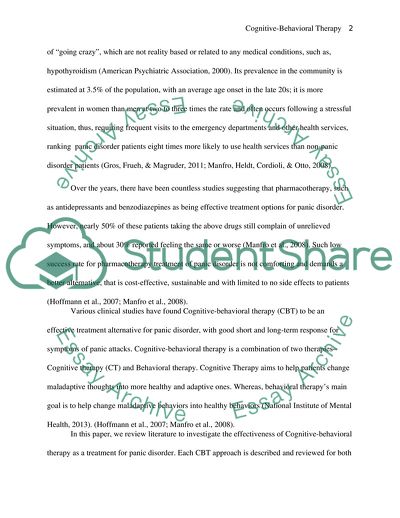Cite this document
(Is Cognitive-Behavioral Therapy an Effective Treatment for Panic Literature review Example | Topics and Well Written Essays - 4000 words, n.d.)
Is Cognitive-Behavioral Therapy an Effective Treatment for Panic Literature review Example | Topics and Well Written Essays - 4000 words. https://studentshare.org/psychology/1796468-is-cognitive-behavioral-therapy-an-effective-treatment-for-panic-disorder
Is Cognitive-Behavioral Therapy an Effective Treatment for Panic Literature review Example | Topics and Well Written Essays - 4000 words. https://studentshare.org/psychology/1796468-is-cognitive-behavioral-therapy-an-effective-treatment-for-panic-disorder
(Is Cognitive-Behavioral Therapy an Effective Treatment for Panic Literature Review Example | Topics and Well Written Essays - 4000 Words)
Is Cognitive-Behavioral Therapy an Effective Treatment for Panic Literature Review Example | Topics and Well Written Essays - 4000 Words. https://studentshare.org/psychology/1796468-is-cognitive-behavioral-therapy-an-effective-treatment-for-panic-disorder.
Is Cognitive-Behavioral Therapy an Effective Treatment for Panic Literature Review Example | Topics and Well Written Essays - 4000 Words. https://studentshare.org/psychology/1796468-is-cognitive-behavioral-therapy-an-effective-treatment-for-panic-disorder.
“Is Cognitive-Behavioral Therapy an Effective Treatment for Panic Literature Review Example | Topics and Well Written Essays - 4000 Words”. https://studentshare.org/psychology/1796468-is-cognitive-behavioral-therapy-an-effective-treatment-for-panic-disorder.


